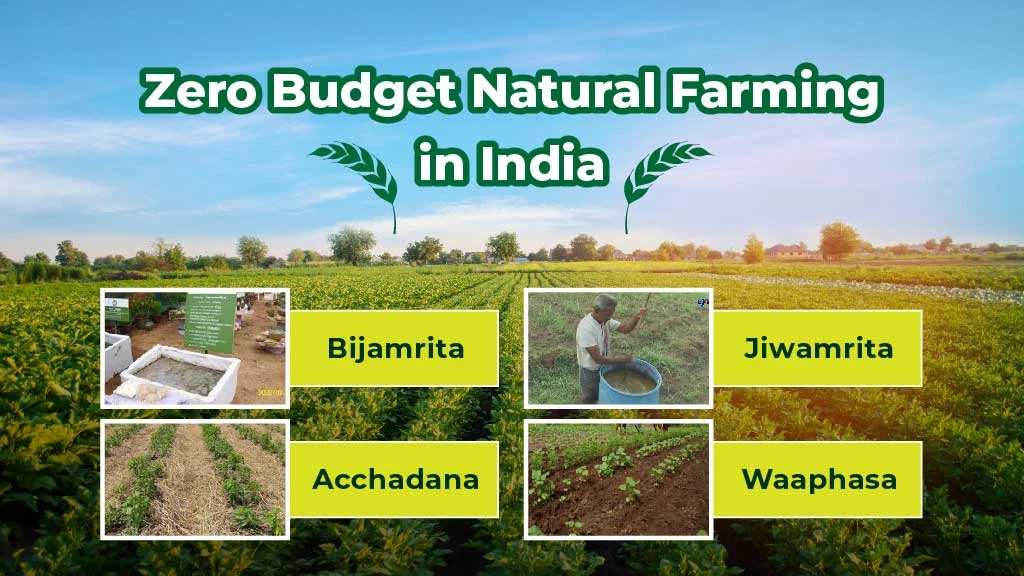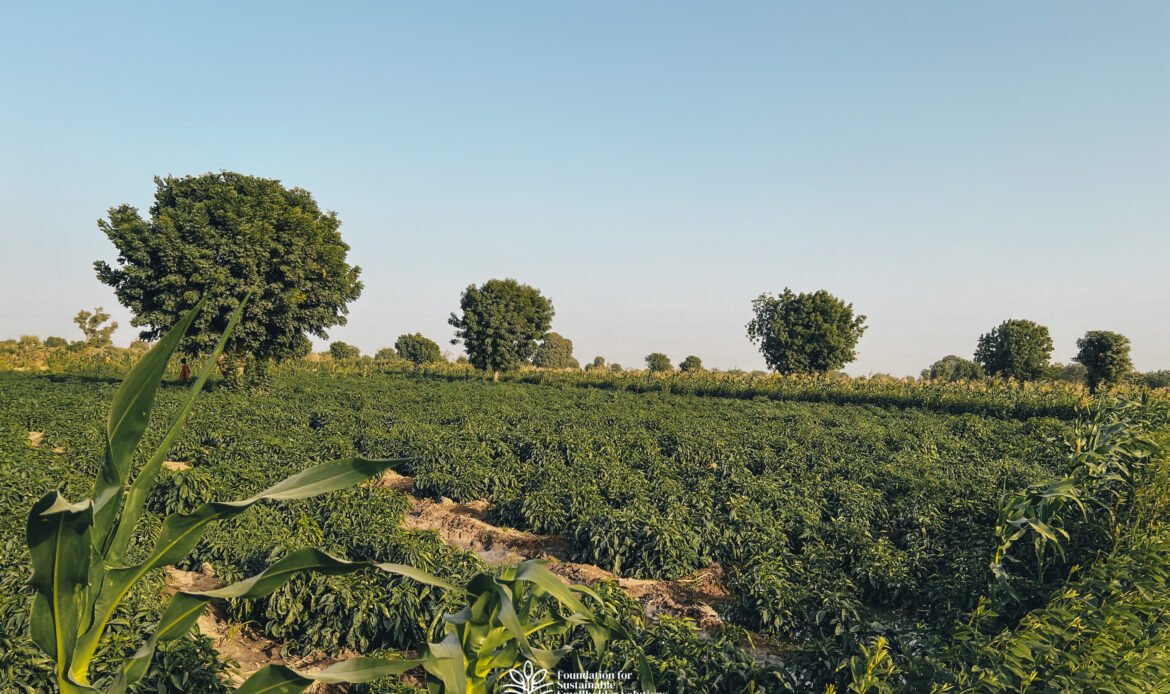As Nigeria faces growing concerns around soil degradation, the high cost of farm inputs, and food insecurity, the need for a transformative approach to agriculture has never been more urgent. One promising model—proven in parts of India and increasingly gaining global attention—is Zero Budget Natural Farming (ZBNF). Rooted in the principles of ecological balance and low-cost inputs, ZBNF may be the breakthrough Nigeria’s smallholder farmers have long needed.
ZBNF is a holistic, regenerative farming system that eliminates the use of synthetic fertilisers, pesticides, and other expensive external inputs. It encourages farmers to work with nature—relying on the resources readily available on the farm or in the local community—rather than against it. The result is a more affordable, sustainable, and resilient approach to agriculture that protects the soil, reduces dependence on chemicals, and enhances farmer incomes.
Learning from the Indian Experience
The most extensive application of ZBNF has taken place in Andhra Pradesh, India, where the state government launched an ambitious initiative in 2015 to scale up natural farming. By 2018, more than 160,000 farmers across 972 villages were practicing ZBNF on over 63,000 hectares of land. The approach not only reduced input costs but also cut water usage by up to 60 percent and significantly lowered methane emissions. Moreover, many farmers reported improved soil fertility, increased resilience to climate variability, and better economic outcomes.
This example offers a strong case for adaptation in Nigeria, where agricultural conditions are not dissimilar. Much like in Andhra Pradesh, Nigeria’s farming population is dominated by smallholders who often struggle with rising input prices, debt, and declining soil health due to years of chemical-based farming.
The Principles Behind ZBNF
ZBNF operates on the belief that healthy soil and biodiversity are the foundations of productive farming. The method prohibits external chemical inputs and encourages the use of indigenous knowledge, natural resources, and biological processes to support plant growth and pest management.
A key feature of ZBNF is the principle of “zero budget” cultivation, where farmers use their own resources without spending on industrial inputs. Soil is kept covered with crops throughout the year to prevent erosion and enhance nutrient cycling. Minimal tillage is practised to preserve soil structure and microbial life. Indigenous seeds are prioritised over genetically modified or hybrid varieties, and mixed cropping is encouraged to reduce pest incidence and ensure income diversification.
Another important practice is the integration of trees and animals into the farming system. Trees provide shade, organic matter, and improve microclimates, while livestock contribute manure and urine essential for preparing natural fertilisers. Water and moisture conservation techniques such as mulching and minimal irrigation (using the concept of Whapasa, which focuses on maintaining optimal air-water balance in the soil) further boost the efficiency of the system.

ZBNF is supported by four foundational elements known as its “four wheels.” These are simple, cost-effective, and rooted in indigenous practices.
- Beejamrutha is a natural seed treatment solution made from water, cow dung, cow urine, a small amount of lime, and a handful of soil. This mixture protects seeds from pathogens during germination.
- Jeevamrutha is a fermented microbial culture that enhances soil health and stimulates plant growth. It is prepared using water, cow dung, cow urine, jaggery (unrefined sugar), pulse flour, and a bit of soil. When applied to the soil, it increases microbial activity, enriches nutrient availability, and accelerates organic matter decomposition.
- Mulching—using dry straw, live crops, or organic waste—helps retain soil moisture, suppress weeds, and prevent erosion. It also increases organic residues in the soil, which is essential for maintaining fertility.
- Whapasa, a concept introduced by ZBNF pioneer Subhash Palekar, proposes that plants need water vapour in the root zone rather than flooding or heavy irrigation. This approach reduces water usage and increases resilience during dry spells.
Why ZBNF Matters for Nigeria
For Nigeria, where an estimated 70% of farmers are smallholders and over 90% of cultivated land relies on rainfall, ZBNF offers practical solutions. It significantly reduces costs by eliminating expensive inputs, which is especially important as fertiliser prices and fuel costs continue to rise. It also aligns well with the government’s efforts to reduce import dependence and promote local food production.
ZBNF can also play a role in climate adaptation. Natural farming improves soil structure and water-holding capacity, making farms more resilient to drought and flooding—challenges that are becoming more frequent with climate change. At a time when methane emissions from rice fields and cattle are under scrutiny, ZBNF’s ability to reduce such emissions through multiple soil aeration practices is particularly relevant.
Challenges and Controversies
Despite its many benefits, ZBNF is not without criticism. In India, researchers and agricultural scientists have raised concerns about the lack of controlled trials validating claims of higher yields. There are questions about how soil nutrients—especially nitrogen—are replenished over time without external supplementation. Critics argue that continuously drawing nitrogen from soil organic matter without adequate replacement could eventually degrade fertility.
Moreover, some farmers have reported lower yields in the initial transition period, and scaling the practice requires consistent training, community engagement, and support from agricultural extension services. In Nigeria, limited access to livestock (especially desi cows, which are preferred in ZBNF), poor awareness of natural methods, and an entrenched reliance on agrochemicals could hinder rapid adoption.
A Balanced Way Forward
Rather than promoting an abrupt shift from conventional to natural farming, experts suggest a phased transition. Nigerian farmers could begin by integrating specific ZBNF practices—such as mulching or seed treatment—while gradually reducing chemical inputs. This would allow them to experience the benefits first-hand while managing risks.
There’s also growing support for what’s known as Precision Natural Farming—a middle path that combines the ecological strengths of ZBNF with modern monitoring tools and data-driven techniques. This hybrid model can optimise inputs, reduce environmental impact, and ensure productivity remains stable.
The Road Ahead
For ZBNF to succeed in Nigeria, a coordinated effort will be required. Policymakers must prioritise funding for research, training programmes, and pilot projects across diverse agro-ecological zones. NGOs and farmer cooperatives can play a critical role in educating communities and creating platforms for knowledge exchange. Agricultural institutions can adapt the model through experimentation and validation suited to local conditions.
Ultimately, ZBNF is not just about changing how we farm—it’s about changing how we think about farming. It shifts the paradigm from high-input, industrial agriculture to an approach that is restorative, inclusive, and rooted in the wisdom of natural systems.In a country like Nigeria, where agriculture is both a livelihood and a legacy, Zero Budget Natural Farming has the potential to empower millions of farmers, improve food security, and heal the land for generations to come.


